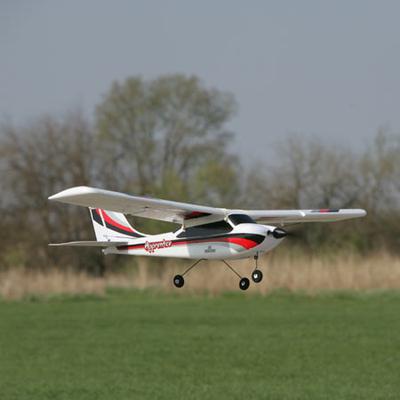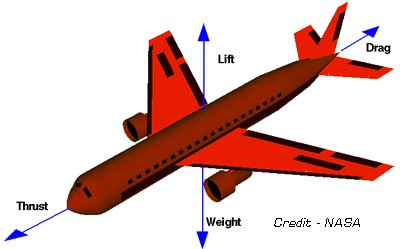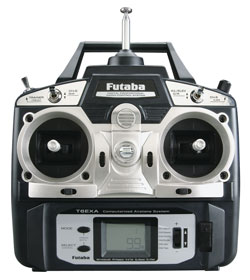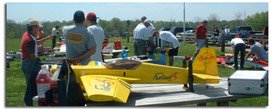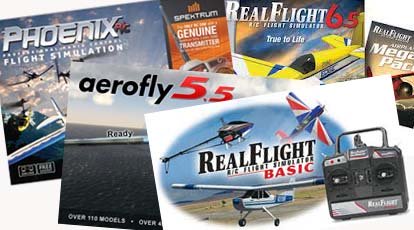RC Frequencies at The Field
Newer 2.4 Ghz radio systems have made it much easier to keep track of RC frequencies at the at the flying field or other event where many planes are being flown at the same time. In a nut shell, these newer systems do all the work for you by determining what frequencies are in use and avoid them.
Toy AirplanesRC frequencies used by toy airplanes are different than the frequencies used by hobby class airplanes. Toy grade RC airplanes are generally geared towards children and can be found at most department stores and generally operator on either 27 Mhz or 49 Mhz. |
There's nothing wrong with using a trusty old 72Mhz radio. As a matter of fact you can get some killer deals on some high end radios simply because most people have moved on to 2.4 Ghz. You have to be extremely careful flying around others with 72 Mhz systems. Why? Let's just say two transmitters controller one plane never ends well! |
Until the most recent explosion in Spread Spectrum technology, all hobby grade RC aircraft transmitters used RC frequencies in the 72 MHz range. The FCC (Federal Communications Commission) regulates all public airwaves in the United States. The FCC has designated the range of frequencies between (72.010 - 72.990)MHz for radio controlled aircraft.
So what exactly is a channel?
Two radio controlled airplanes can not operate on the exact same frequency at the same time. The receivers in both airplanes would be getting signals from both transmitters. That leads to a pile of balsa scraps in a hurry!
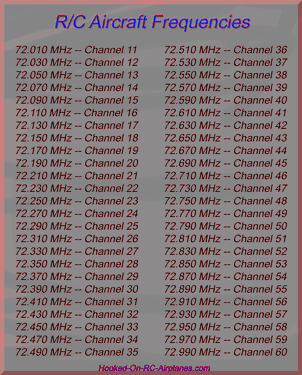
For this reason the RC frequencies, designated for RC aircraft, have been divided into 50 designated frequency bands (or slices) within the 72MHz range.
It is much easier to assign each of these 50 frequency bands a reference number instead of having to reference the entire 5 digits of each. These reference numbers are called channels.
Don't be intimidated by all of these numbers. If you decide to get an FM transmitter all you have to know is what channel your radio uses. This is simply a two digit number between 11 and 60 and is labeled on the back of your radio.
Important Note
This can be confusing because each function that a transmitter performs is also called a channel. So the word channel means two different things:
- Specific transmitter function
- Frequency the transmitter is utilizing
The Frequency Board
Flying clubs consist of tons of people that are just as excited about flying
their airplanes as you are. So how do you know if someone else at the airfield
is using the same RC frequency that your airplane uses?
Every club has a frequency board. The frequency board system at each club
varies in detail but all accomplish the same thing. A frequency board is a
designated place at the flying field where every pilot MUST clearly communicate
to everyone what frequency they are using.
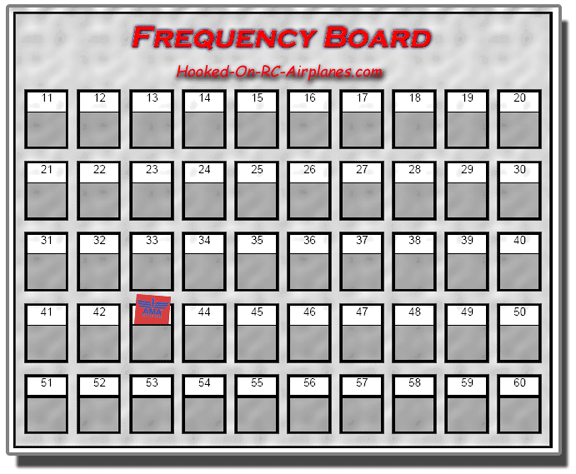
At my club there is a board with 50 card holding slots. Every pilot is required to put their AMA card in the slot that corresponds to their frequency (channel). There are also 50 cloths pins numbered 11 - 50. After the pilot leaves his card in the appropriate slot he takes the cloths pin with his channel number and clips it to his transmitter antenna.
Every pilot must check the frequency board before turning on his transmitter. If a card is in the slot for his frequency he knows who it is because this person's name will be on the AMA card. Most everyone is more than happy to take turns using the frequency.
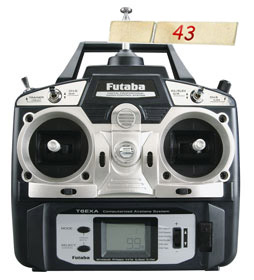
This system has double protection. The pilot MUST have the cloths pin and have his card in the appropriate slot before turning on his radio. If a pilot breaks these rules, even if on accident, and causes another airplane to crash then they are held responsible for the cost of replacing the airplane they destroyed.
Some of the airplanes I've seen at my club probably cost more than my car! So you must ALWAYS follow the frequency board procedure with no exceptions!
Changing Your RC Frequency
Have you bought a radio system only to realize there are 10 other people at your club with the same frequency!
While most pilots are more than happy to share the RC frequencies pin with you, this is still a pain in the butt!
It is much more enjoyable when you don't have to worry about handing the frequency pin back and forth like baton in a relay race. If your transmitter has a plug-in module you are in luck!
Changing the Transmitter Frequency
|
Transmitters and receivers have what are called crystals. The crystal determines what channel the system uses. Both the transmitter and receiver crystals must be of the same channel. |
 |
It is against FCC regulations (against the law!) to replace the crystal in your transmitter. But it is NOT illegal to replace a plug-in module that contains the crystal. If your radio has an RF plug-in module you can simply pop it out and replace it with a module of a different channel.
|
Some higher end transmitters have what are called synthesized RF modules. With a synthesized module such as this Futaba 9C/9CS you can simply turn the dials on the module to choose any channel you want! |
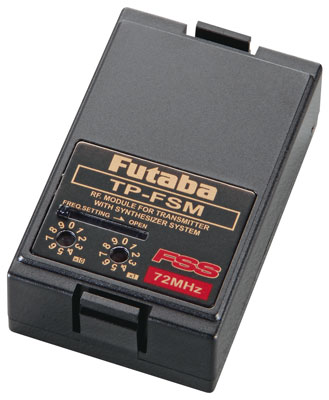 |
If your radio does not have a plug-in module than you would have to send the radio back to the manufacture to have the crystal changed.
Changing the Receiver Frequency
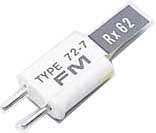
Once you've changed the transmitter's crystal all you have to do is replace the receiver's crystal so that both are using the same RC frequencies or channels. Simple right?
Well, it's almost that easy. There are a few things that you need
to check before going out and buying a crystal.
Positive-Negative Shift
If you live in North American you need to
make sure the transmitter and receiver uses the same "shift". The transmitter
could be positive shift or negative shift.
An FM radio control transmitter uses two RC frequencies. The two RC frequencies are the carrier frequency (frequency corresponding to the channel) plus 0.005 MHz, and carrier frequency minus 0.005 MHz.
So a channel 43(72.650 MHz)transmitter transmits on both 72.655 MHz and 72.645 MHz. With PPM one frequency stands for pulse on, the other frequency stands for pulse off.
With PCM one frequency represents a zero, the other frequency represents a one. Positive shift is when the carrier plus 0.005 MHz represents a pulse on. Negative shift is when the carrier minus 0.005 MHz represents a pulse one. Other than that there is no difference.
Clear as mud?
All you really need to know is that Airtronics and JR use positive shift RC
frequencies. Futaba and Hitec use negative shift RC frequencies. For a
transmitter and receiver to be compatible they have to be of the same channel
and shift.
Instead of bouncing back and forth between two RC frequencies to represent
pulse on or pulse off, AM radios only have one frequency. Frequency on
represents pulse on, frequency off represents pulse off. For this reason you
don't have to worry about shift with AM radios.
Dual Conversion Receivers
Receivers produce an internal signal that
is very close to the frequency coming from the transmitter. When this signal is
added to the transmitter signal it produces a much lower frequency signal with
the same information.
Lower frequency signals make it possible for the receiver
to amplify the signal while eliminating noise when the airplane is far away.
This new signal at a lower frequency carrying the same information is called an
intermediate frequency (IF). The receiver decodes the information (radio
language) from the IF and passes it on to the servos. This is called a single
conversion receiver.
Dual conversion receivers came about when the AMA divided the 72 MHz frequency band into 50 channels from what used to be 7 channels. This meant that each channel had to operate in a much smaller frequency range.
To avoid
interference from the neighboring RC frequencies, another intermediate frequency
was added in series with the existing IF. A dual conversion receiver converts
the signal to an internal frequency. It then repeats the process again to create
a second internal frequency. This makes it impossible for the neighboring
channels to interfere with the signal.
Any radio that is being used at a flying field will be a dual conversion
receiver or have some means of filtering out interference from the neighboring
channel.
High Band/Low Band
Futaba receivers are tuned
to the center of either a low band frequency (channel 11 to channel 35) or high
band (channel 36 to channel 60). So if you have a low band receiver you are
limited to the channels 11-35.
Similarly if you have a high band receiver you
can only use crystals for channels 36 – 60. If the receiver is not marked high
or low, you can look into the crystal slot to see if there is a red mark. A red
mark indicated a high band. No red mark indicates low band.
PCM Receivers
All brands of PPM FM receivers are compatible with
all brands of PPM FM transmitters provided that they have the same shift and
same channel crystal(or pcm module). PCM receivers are only compatible with
transmitters of the same brand.
While the PPM radio language is common to all radio brands, each company has its own proprietary "PCM language". The difference is in the way that all those 0's and 1's are magically converted to the binary numbers representing the servo positions.
Flight Packs
If you are purchasing a second airplane it is not necessary to buy an entire new
radio system. You can simply buy another receiver, crystal, servos, and battery.
You can purchase these items together as a package much cheaper than buying them
separate. This package is called a "Flight Pack".
Home > RC Airplane Radio Basics > RC Frequencies
Let’s Go Flying! |
|
5 Steps for Successful First Flight! When the RC bug bites, it bites hard! Control yourself my friend! Save yourself much time and money by following these five steps to success! |
